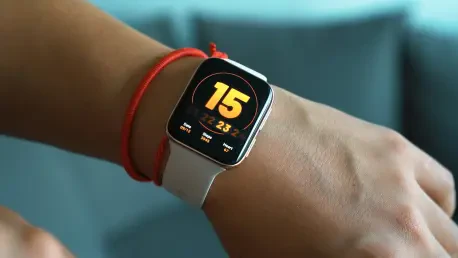In the ever-evolving world of wearable technology, Simon Glairy stands out as an expert in the fields of insurance and Insurtech. His specialized focus on risk management and AI-driven risk assessment offers invaluable insights into how technology is reshaping our interaction with fitness gadgets and applications like Whoop. Today, we delve into the intricacies of managing language settings on the Whoop app, uncovering the challenges and solutions provided by this innovative platform.
What are the steps to change the language in the Whoop app on an iOS device?
To change the language on the Whoop app using an iOS device, you first need to ensure your app is up-to-date. Open the App Store, head to your profile, and update the Whoop app if necessary. Then, navigate to the ‘Settings’ app and type ‘Preferred Language Order’ in the search bar. After adding a compatible language, scroll to the Whoop app settings and select your preferred language.
How important is it to update the Whoop app before changing the language settings?
Updating the app is crucial before changing the language settings. Without the latest version, the changes might not apply correctly. It’s a foundational step—similar to laying down a solid base before building something new. Without it, users might face glitches or incomplete updates in language preferences.
What are the settings you need to access on your iOS device to change the language specifically for the Whoop app?
You’ll need to access the ‘Preferred Language Order’ in your iOS ‘Settings’ app. Start by searching for it, add a compatible language if necessary, and then head specifically to the Whoop app settings to adjust the language. This series of steps ensures your preferences are correctly registered for the app.
After adding a new language to your iOS settings, how do you set it as the preferred language for the Whoop app?
Once a new language is added, navigate to the Whoop app’s settings within your device’s ‘Settings’ app. Here, you will find the ‘Preferred Language’ option, allowing you to pick the language you want the app to use, showing the newly selected language with a blue tick.
Which languages does Whoop currently support in its app?
Whoop currently supports English, French, Latin American Spanish, European Portuguese, German, and Italian. However, European Spanish is notably absent, highlighting some geographical language limitations.
What is the difference in changing the language settings for the Whoop app between iOS and Android devices?
The primary difference is that on iOS, the Whoop app allows for language customization that is independent of the device’s system language. Conversely, on Android devices, the app’s language is tied directly to the phone’s overall language settings, offering less flexibility.
Why can’t users set a different language for the Whoop app on Android compared to their device’s system language?
This is due to the app’s integration with Android’s system settings, which dictates a more unified approach to language settings across the device. Whoop’s design philosophy here follows Android’s tendency for system-wide consistency, which simplifies user experience at the cost of individual app flexibility.
How can Android users ensure they are using the latest version of the Whoop app before attempting to change the language settings?
Android users should check the Google Play Store for any pending updates for the Whoop app. By tapping on their profile in the Play Store, they can review any apps queued for updating. Ensuring that the Whoop app is current is necessary to avoid potential issues when changing language settings.
Describe the process for setting a new default language on an Android device with the goal of changing the Whoop app language.
First, ensure the Whoop app is updated. Then, go to the device’s ‘Settings’ app, search for ‘Language’, and add a new language from the list. Set this as the default language. After updating, force quit and reopen the Whoop app to see the changes reflected, provided the language is supported.
How does updating the app influence the effectiveness of language setting changes in the Whoop app?
Updating ensures all recent features, bug fixes, and compatibility settings are in place. This vital step helps users seamlessly integrate new language options, reflecting changes without errors or outdated content.
What challenges might users face when changing language settings on the Whoop app due to its limited language support?
Users may face the frustration of not finding their preferred language, especially if it’s not among the supported list. This limitation can be a barrier to non-English speakers or those whose languages are geographically specific but not included, like European Spanish.
Can you explain why there is no support for European Spanish in the Whoop app?
The absence of European Spanish could be due to prioritizing other languages based on demographic research or market demand. It may also reflect resource allocation choices, focusing on Latin American Spanish to target a broader audience across the Americas.
How does Whoop accommodate non-English speakers given its screenless device setup?
Whoop has focused on app-based interfaces for data interaction, which means language support is critical. By offering a selection of languages within the app, users can still access key information comfortably, even without a device screen, making it essential for Whoop to continue expanding language options.
What is your forecast for the future of language customization in fitness apps like Whoop?
Looking forward, increased localization will become more prevalent, with apps offering broad language support to enhance global usability. Fitness tech will likely adapt by providing even more personalized user experiences, where language plays a key role in user engagement and accessibility.









